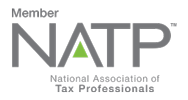
by Ambassador Tax Services, Inc. | Aug 11, 2020 | Tax Tips and News
The Joint Board for the Enrollment of Actuaries is providing enrolled actuaries with some relief when it comes to picking up their continuing professional education (CPE) credits.
The COVID-19 pandemic has caused the Joint Board to rethink the requirement that actuaries have to attend a certain amount of CPE courses in person.
The board is waiving the physical presence requirement for any formal programs held between Jan.1, 2020 and Dec. 31, 2022. It reflects the problems the coronavirus has caused, especially those involving traveling to and participating in gatherings that require close contact with other people.
This temporary waiver applies to all enrolled actuaries, in active or inactive status. Joint Board rules normally require no less than 1/3 of the total hours of continuing professional education credit required for an enrollment cycle must be obtained by participating in a formal program or programs.
Without the waiver, an enrolled actuary earning credit hours for a formal program would have to physically participate in the program in the same physical location with at least two other participants engaged in substantive pension service.
The relief measure doesn’t reduce the amount of CPE required—enrolled actuaries still have to earn the same number of credits that would be required otherwise. Other requirements for CPE credits still apply, including what amounts to a qualified program under Joint Board regulations, and attendance by at least three participants engaged in “substantive” pension service. Courses must still allow an opportunity for participants to interact with the instructor during the course of the program.
In addition, the certificate of completion issued by the program’s sponsor must indicate that the program is a formal program.
“The Joint Board is committed to protecting the health and welfare of enrolled actuaries and understands the challenges that this health pandemic creates,” the IRS states. “By waiving the physical location requirement while retaining all other steps to earn credit hours in formal programs, the Joint Board feels these measures serve to protect the well-being of enrolled actuaries by encouraging social distancing and reducing person-to-person contact without compromising the integrity of the CPE requirements.”
An enrolled actuary—whether active or inactive—who did not receive a notice of the waiver by email should contact the Join Board at [email protected].
Source: IR-2020-177
– Story provided by TaxingSubjects.com

by Ambassador Tax Services, Inc. | Aug 8, 2020 | Tax Tips and News
The Internal Revenue Service in recent years has made many advancements in the online service sector, installing helpful applications to aid individual taxpayers. But a new audit shows that if an unauthorized user manages to get into the system, many times the applications are unable to show investigators where those intruders went.
The audit results come from the Treasury Inspector General for Tax Administration, or TIGTA. This latest audit was a follow-up on a previous study of the audit trail capabilities of online IRS applications.
While TIGTA gives the IRS credit for implementing solutions to address weakness in its audit trail policies, procedures and guidance, this latest study shows more work remains to be done.
“Implemented audit trail solutions are not effective, and the IRS continues to have challenges with ensuring that all applications are providing complete and accurate audit trails for monitoring and identifying unauthorized access and for other investigative purposes,” the Inspector General writes.
What did the TIGTA audit request?
TIGTA’s 27-page report says the IRS couldn’t provide its auditors with an accurate inventory of all the applications that store or process taxpayer data as well as Personally Identifiable Information (PII). Auditors believe such an inventory is critical as a baseline for all applications that need to be monitored for potential unauthorized access.
The report adds that the applications are required to provide audit trail records to an electronic repository that is set up for investigative purposes.
What were the TIGTA audit findings?
The TIGTA audit showed that a total of 67 IRS online applications should be monitored for unauthorized access.
“Of these 67 applications, TIGTA determined that six (9 percent) applications were providing accurate and complete audit trails, 30 (45 percent) applications were providing incomplete and inaccurate audit trails, and 31 (46 percent) applications were not providing any audit trails to the repository,” the report states.
In addition, not all applications with audit trail deficiencies were being tracked and monitored as required. This could allow unresolved deficiencies to persist indefinitely.
What are TIGTA’s recommendations?
TIGTA’s audit reports recommends that the Chief Information Officer of the IRS should:
- ensure that a methodology is developed and implemented to identify and annually update the inventory of all applications that store or process taxpayer and Personally Identifiable Information for the purpose of detecting improper cyber activities and to reconstruct events for potential criminal investigations;
- ensure that audit trail deficiencies are properly tracked and monitored as required;
- ensure the internal policy and the Audit Trail Deficiency Memorandum template document clearly and consistently communicate each stakeholder’s responsibilities to ensure that the appropriate actions are taken when security weaknesses have been identified.
In its response, the IRS agreed to properly track audit trail deficiencies, clearly and consistently communicate stakeholders’ responsibilities, and to document process improvements.
However, the agency also said it does not plan to clearly identify which applications use Personally Identifiable Information for purposes of detecting improper activities and to reconstruct events for potential criminal investigations.
– Story provided by TaxingSubjects.com

by Ambassador Tax Services, Inc. | Aug 7, 2020 | Tax Tips and News
Businesses are a favorite target of identity thieves. Reports often cover the theft of customer financial information, like credit cards, debit cards, and bank accounts. Perhaps less well known are scams that routinely use stolen business information—whether the business owner’s personal information or their Employer Identification Number—to file tax returns and Forms W-2. The Internal Revenue Service this week announced a new affidavit for reporting tax-related identity theft incidents that target business entities.
“The Form 14039-B, an identity theft affidavit for businesses and other entities, will make it easier for businesses, estates, trusts and tax-exempt organizations to report identity theft to the IRS,” the IRS says. “Submitting this form will enable the IRS to more quickly assist entities who are victims of identity theft. The form is publicly available on Identity Theft Central at IRS.gov/IdentityTheft under the ‘Business’ tab.”
Tax professionals are often the first to see the signs that one of their business or entity clients have been the victim of tax-related identity theft. If you see a duplicate filing rejection code the first time you submit your client’s return, that’s a massive red flag. Other reasons taxpayers should consider filing out the new affidavit include receiving notices about unfiled tax returns and W-2s, as well as surprise balance due notices.
That said, the IRS outlines two situations that do not call for filing the new Form 14039-B:
- The taxpayer never applied for an EIN but has begun receiving notices for a business in their name. INSTEAD, they should file Form 14039, Identity Theft Affidavit, under their Social Security Number (SSN), Individual Taxpayer Identification Number (ITIN) or Adoption Taxpayer Identification Number (ATIN).
- The business, estate, trust or exempt organization experienced a data breach with no tax-related impact to the business entity. For example, a business reports a breach of their computer system and after thorough research of the account, there is no evidence of a fraudulent tax return or W-2s being filed.
Finally, the IRS emphasizes that the new affidavit should not be used to report individual tax-related identity theft incidents. If one of your individual clients is a victim of identity theft, use Form 14039 instead.
– Story provided by TaxingSubjects.com

by Ambassador Tax Services, Inc. | Aug 6, 2020 | Tax Tips and News
More and more, tax professionals are relying on working remotely, also known as teleworking, in order to stay connected with clients and remain productive.
In order to protect the vital information so critical to the income tax process, the Internal Revenue Service and its Security Summit partners are urging tax pros to secure their remote locations by using Virtual Private Networks (VPNs) to protect against cyber threats.
A VPN provides a secure, encrypted “tunnel” to transmit data between a remote user through the internet and the company’s network. With teleworking or working from home increasing during the pandemic, VPNs are critical for protecting and securing internet connections.
Part Three in a Series
The Security Summit has issued a five-part series of guidance articles entitled “Working Virtually: Protecting Tax Data at Home and at Work.” This is the third in that series.
The security awareness initiative by the IRS, state tax agencies and the private-sector tax industry – working together as the Security Summit – spotlights basic security steps for all practitioners, but especially those working remotely or social distancing in response to COVID-19.
“For firms expanding telework options during this time, a virtual private network is a must have,” said IRS Commissioner Chuck Rettig. “We continue to see tax pros fall victim to attacks every week. These networks are something you can’t afford to go without. The risk is real. Taking steps now can protect your clients and protect your businesses.”
Costly Sins of Omission
Teleworking practitioners who fail to use VPNs risk remote takeovers by cyber-thieves, giving criminals access to the tax pro’s entire office network merely by accessing an employee’s remote internet connection.
Tax professionals should seek out cybersecurity experts if they can afford it. If not, tax pros can search online for “Best VPNs” to find a legitimate vendor. Major technology websites also provide lists of top services.
However, never click on a “pop-up” ad hawking a security product. Usually, it’s a scam.
Telework Tips
The Department of Homeland Security’s Cybersecurity and Infrastructure Security Agency (CISA) also encourages companies and organizations to use VPNs.
CISA offers this advice:
- Update VPNs, network infrastructure devices and devices being used to remote into work environments with the latest software patches and security configurations.
- Alert employees to an expected increase in phishing attempts.
- Ensure information technology security personnel are prepared to ramp up these remote access cybersecurity tasks: log review, attack detection, and incident response and recovery.
- Implement multi-factor authentication on all VPN connections to increase security. If multi-factor is not implemented, require teleworkers to use strong passwords
- Ensure IT security personnel test VPN limitations to prepare for mass usage and, if possible, implement modifications—such as rate limiting—to prioritize users that will require higher bandwidths.
For more information on VPNs and other security measures, check out the newly revised IRS Publication 4557, Safeguarding Taxpayer Data, and Small Business Information Security: The Fundamentals by the National Institute of Standards and Technology.
In addition, Publication 5293, Data Security Resource Guide for Tax Professionals, can provide a compilation of data theft information available on IRS.gov.
To stay connected to the IRS for the latest in security alerts and recommendations, subscribe to e-News for Tax Professionals and Social Media; or visit Identity Theft Central at IRS.gov/identitytheft.
– Story provided by TaxingSubjects.com

by Ambassador Tax Services, Inc. | Aug 5, 2020 | Tax Tips and News
The Internal Revenue Service is changing the guard in its Criminal Investigation (CI) division. James Lee, the current deputy chief of the division and a 25-year IRS veteran, will take the reins from retiring Chief Don Fort.
Fort will step down Sept. 30 after leading CI since 2017. Fort began his IRS career in 1991 as a special agent in CI’s Baltimore District.
IRS Commissioner Chuck Rettig says Lee brings a lot of experience to his new position.
“Jim is highly respected throughout the IRS and will continue long-standing working relationships with the civil enforcement functions of the IRS as well as with the Department of Justice’s Tax Division and tax prosecutors throughout the country. He understands the need to support compliant taxpayers by maintaining a strong, robust enforcement effort focused on those who are compliance challenged,” Retting said.
Wide-Ranging Responsibilities
As Chief of the Criminal Investigation division, Lee will lead enforcement efforts to investigate tax code violations and other related yet diverse financial crimes such as money laundering, public corruption, cybercrimes, identity theft, narcotics and terrorist financing.
Before becoming Deputy Chief, Lee served as Director of Field Operations, Northern Area, overseeing CI enforcement in Boston, New Jersey, New York, Ohio, and Philadelphia field offices. He also previously served as Director of Field Operations, Southern Area and the Director of Strategy.
The new Chief started his IRS career in 1995, when he was special agent in Detroit. He later moved into CI’s leadership ranks, serving in increasingly responsible positions as he ascended the management ladder.
His experience included Supervisory Special Agent in the New Orleans Field Office; Headquarters Senior Analyst in the International and Financial Crimes Sections; Assistant Special Agent in Charge within the Boston Field Office; and Special Agent in Charge of the New Orleans Field Office and later the Chicago Field Office.
Lee has a Bachelor of Business Administration Degree with a concentration in Accounting from Tiffin University in Ohio.
Some Big Shoes to Fill
Commissioner Rettig said Lee will follow a path blazed by his predecessor in the Chief’s office. Fort’s contributions to CI, Rettig noted, will only put Lee in a better position to lead the division from here.
“Don has been a remarkable leader and champion for IRS Criminal Investigation,” Rettig said. “He has a distinguished career and the entire IRS leadership team appreciates everything he has done to uphold the law and support tax administration. We look forward to Don’s remaining time at the IRS as well as Jim taking on a new role and building on the great tradition in CI.”
– Story provided by TaxingSubjects.com











